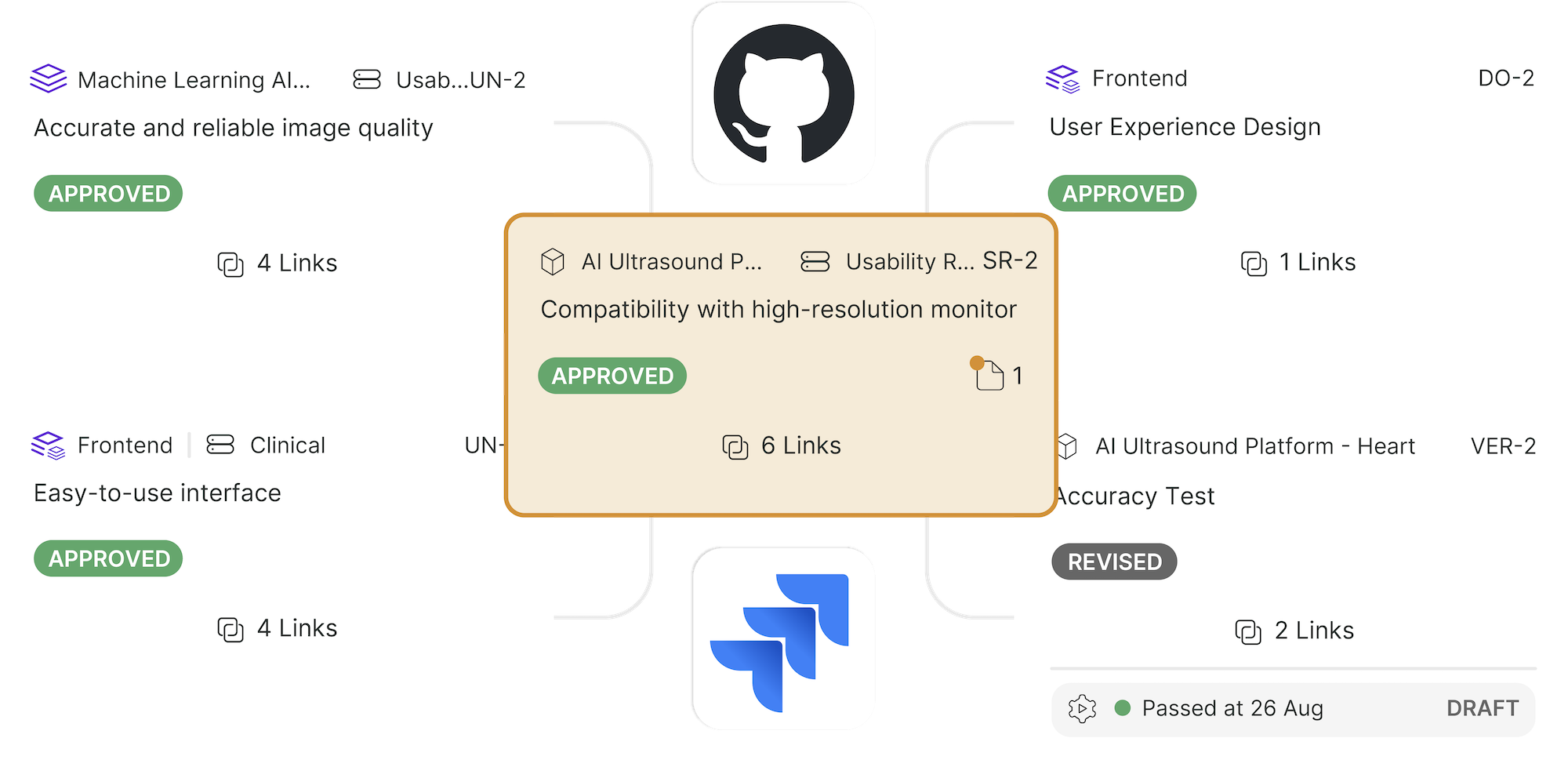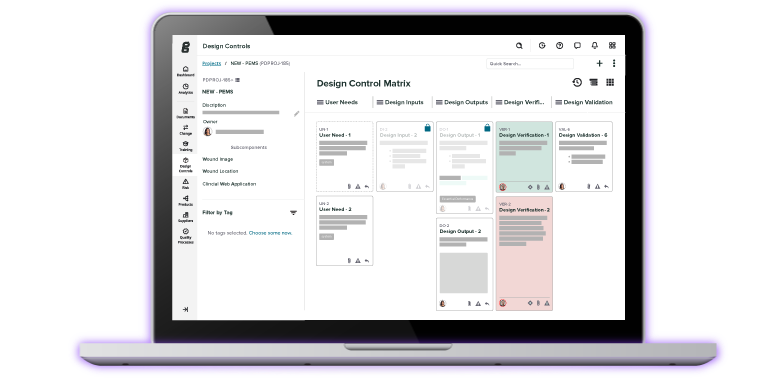What’s left of the QSR in QMSR? Your guide to the new Part 820

The effective date of the new Quality Management System Regulation (QMSR) is Feb. 2, 2026. On that day, the old Quality System Regulation (QSR) will be removed from 21 CFR Part 820, and the QMSR will come into full force.
Part 820 itself isn’t going anywhere, but it will look very different. That’s because FDA is incorporating ISO 13485:2016 by reference. Instead of a written requirement for each part of your quality system, Part 820 will include a reference to the section of ISO 13485:2016 where you can find that requirement.
Overall, this means Part 820 will be much shorter; most of the text will simply direct you to ISO 13485. However, there are some sections of the QMSR that the FDA felt ISO 13485 did not fully cover. In these cases, there are sections in Part 820 that include further explanation or requirements not included in ISO 13485.
In this article, I’ll walk through these sections and what you need to know about them, as well as answer some common questions about inspections and independent reviewers.
What’s in Part 820 that isn’t covered by ISO 13485:2016?
This is what the table of contents for Part 820 looks like in the Final Rule for QMSR:
.png)
When a section is “Reserved,” that means it will direct users to ISO 13485:2016 without additional information or requirements. The sections that are left all have important information in them that is not covered in ISO 13485. Here’s what you need to know about them:
-
Section 820.1 - Scope: Here the FDA lays out the applicability of the regulation and its scope.
-
Section 820.3 - Definitions: This section notes that the regulation is using the definitions from ISO 13485:2016 and Clause 3 of ISO 9000:2015. However, the FDA has also included some definitions here that are not used in either standard.
-
Section 820.7 - Incorporation by reference: this section simply states that most of the content in Part 820 has been removed and replaced with references to their location in ISO 13485:2016 and ISO 9000:2015. It also provides instructions on how medical device companies can obtain the standards.
“But what happens if ISO updates 13485 again?” was one of the biggest questions from industry after FDA first announced they were harmonizing Part 820 with ISO 13485:2016. The FDA has responded that they will evaluate any revisions to the standard and determine whether they need to amend the QMSR when the time comes. However, we won’t need to worry about that anytime soon. ISO 13485:2016 was reviewed and confirmed in 2025, and won’t be up for review again until 2030.
-
Section 820.10 - Requirements for a quality management system: This section states that medical device companies are still subject to other FDA regulations such as:
-
21 CFR Part 803 - Medical Device Reporting
-
21 CFR Part 806 - Medical Devices; Reports of Corrections and Removals
-
21 CFR Part 821 - Medical Device Tracking Requirements
-
21 CFR Part 830 - Unique Device Identification (UDI)
-
820.10 also extends the ISO 13485:2016 traceability requirements for implantable devices to devices that support or sustain life. Finally, this section is where FDA states that failure to comply with QMSR will render a device “adulterated” and subject to regulatory action.
-
Section 820.35 - Control of records: Here, the QMSR defines content requirements for complaint records (including when complaints should be investigated) and service records explicitly. This is actually more detailed and explicit than what is in the current QSR, so it is worth reading this section carefully.
-
Section 820.45 - Device labeling and packaging controls: The FDA did not find ISO 13485’s requirements for device labeling and packaging controls to be adequate, so they have added requirements to the QMSR. Specifically, the FDA wants to ensure that QMSR requires manufacturers to inspect the accuracy of device labels with respect to certain elements prior to release, along the lines of Part 820.120(b) in the QSR.
It’s worth noting here that the FDA just released a draft guidance for Premarket approval (PMA) and Humanitarian Device Exemption (HDE) submissions. The guidance is intended to assist medical device companies in preparing their QMS for QMSR and providing the appropriate information in their marketing submissions to the FDA.
At the end of the guidance, in sections VII and VIII, the FDA has included information on how companies with high-risk devices should address Part 820.10 and Part 820.35 in their marketing submissions. This is definitely worth checking out if you have a high-risk device that requires a PMA or HDE submission once QMSR is in effect.
What will inspections under QMSR look like?
To be clear, nothing is changing about the FDA’s authority to inspect sites and facilities. However, the Quality System Inspection Technique (QSIT) will be officially withdrawn on Feb. 2nd, when the QMSR goes into effect. While there will still be inspections of your quality system, the FDA has said that QSIT won’t be replaced by a “QSIT 2,” meaning there won’t be another standalone document that replaces it. We are still waiting to hear what will replace it, but you can safely assume that you will be inspected by FDA and it will be similar to how inspections of quality systems were previously carried out.
A few points to remember here:
-
FDA inspections will not provide you with an ISO 13485 certification.
-
If you are ISO 13485-certified, that does not exempt you from FDA inspections.
-
If you are part of the Medical Device Single Audit Program (MDSAP), you will continue to be exempted from routine FDA inspections.
For those not familiar, MDSAP is a program that was started with the goal of streamlining the audit process for companies with products in multiple markets. MDSAP allows these companies to undergo a single audit that is accepted by the members of the program, which include:
-
Therapeutic Goods Administration of Australia
-
Brazil’s Agência Nacional de Vigilância Sanitária
-
Health Canada
-
Japan’s Ministry of Health, Labour and Welfare, and the Japanese Pharmaceuticals and Medical Devices Agency
-
U.S. Food and Drug Administration
Just keep in mind that FDA only exempts MDSAP participants from routine inspections. You will still be subject to premarket inspections and for-cause inspections by FDA.
Finally, there is one more change to audits that you should be aware of. Internal audits, supplier audits, and management reviews are now fair game during inspections. Under QSR these were exempt from the FDA during inspections per Part 820.180(c), but that language is gone from the QMSR. If your company used this exemption to discuss particularly sensitive subjects during internal audits or management reviews, it’s important to start thinking about the implications of this for your inspections now, so you can be prepared on Feb. 2nd.
Do you still need an independent reviewer?
This is a question that has popped up regularly since the Final Rule for QMSR came out in 2024. The “independent reviewer” here refers to a person within your organization who reviews a product’s design, or section of design, during a design review. This person is not responsible for any of the work on the design stage being reviewed—thus their “independent” status.
This requirement is found in section 820.30(e) of the QSR. However, it is nowhere to be found in the QMSR. ISO 13485:2016 does not require an independent reviewer, which means that one could argue it is no longer required at all.
However, it’s hard to believe that the FDA will let this go. Using an independent reviewer is a well-established best practice in medical device development, and there is evidence that the FDA will still expect companies to use one.
In the preamble of the Final Rule, the FDA answers a question on the independent reviewer by stating:
FDA agrees that the final QMSR differs from the previous QS regulation and does not include the explicit requirement that each stage of design review must include an individual(s) who does not have direct responsibility for the design stage being reviewed. We note that Clause 7.3.5 of ISO 13485 requires that design and development review include representatives of functions concerned with the stage under review as well as other specialist personnel… FDA considers that a successful quality management system under Clause 7.3.3 and 7.3.4. will require a similar approach to design review and validation as those developed under the QS regulation.
An honest interpretation of this is that FDA still expects an independent reviewer, even if there is not an explicit clause in QMSR stating that you must have one.
BONUS: If you still have questions about QMSR and how to prepare your QMS, then check out our QMSR Resource Hub, where we've compiled everything you need to understand what's changing, what's at stake, and how to stay compliant.
Get a modern QMS built for medtech regulations
While you’re thinking about the changes you need to make to comply with the QMSR, it also makes sense to take a step back and look at the QMS solution you’re using.
Is it built specifically for medtech? Does it help you achieve truly paperless audits? Does it come with a top-notch team of medical device experts who are always ready to help?
If you answered ‘no’ to any of those questions, it’s probably time to modernize your QMS.
At Greenlight Guru, we built our eQMS for medtech because we know that the ever-changing standards and regulations (like QMSR) are a lot to handle for even the most seasoned medical device professionals. That’s why Greenlight Guru Quality comes aligned with FDA and ISO best practices—so you don’t have to spend months customizing the system just to get compliant.
So if you’re ready to experience the power of an eQMS built just for medtech, then get your free demo of Greenlight Guru today!
Etienne Nichols is the Head of Industry Insights & Education at Greenlight Guru. As a Mechanical Engineer and Medical Device Guru, he specializes in simplifying complex ideas, teaching system integration, and connecting industry leaders. While hosting the Global Medical Device Podcast, Etienne has led over 200...
Related Posts
QMSR Explained: What FDA QSR & ISO 13485 Harmonization Means for Medical Device Companies
FDA Publishes Final Rule on QMSR
QMSR & the End of DMR, DHR, DHF: How FDA’s New Rule Impacts Record-Keeping
Get your free download
QMSR Readiness Playbook
.png?width=250&height=321&name=Quality%20Lead%20Magnet%20Slide-in%20(3).png)

.png?width=575&name=Quality%20Lead%20Magnet%20Slide-in%20(3).png)








